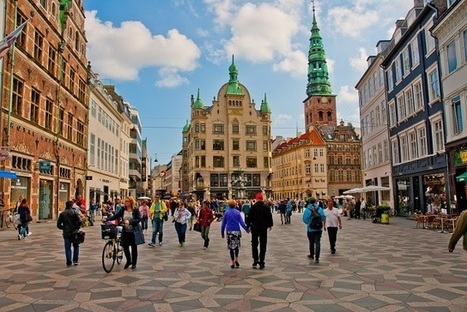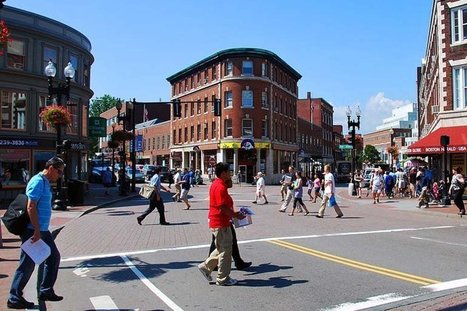To walk in our cities is more than just a simple act of transport. Walking represents an appropriation of urban space for daily life. It means being an active part of the urban environment by learning, understanding and shaping the city on a personal level. Walking is one of the most democratic and equitable ways of getting around, but it’s also one of the ways most linked to factors outside an individual’s control, like social or physical abilities and the presence of infrastructure to walk comfortably and safely.
These are the factors that define walkability, which refers to how safe, convenient, and efficient it is to walk in an urban environment. Walkability has a direct impact on urban residents’ mobility, as the term is often used to communicate how likely the average person is to choose walking over other modes of transport in a given area...
Via Lauren Moss



 Your new post is loading...
Your new post is loading...












Bien vu les vertus de la marche à pied urbaine pour l'appropriation du territoire par ses habitants, quelques exemples de Helsinky à Hambourg
Je ne suis pas Bordelaise, ni au fan club du Maire de Bordeaux, je me déplace beaucoup en France. Ce week-end j'ai marché à Bordeaux et deux choses m'ont sauté aux yeux : 1- il y a des bancs (propres et agréables) partout en centre ville. On peut se reposer très facilement, ce qui facilite grandement la marche surtout des personnes à mobilité réduite (comme mes ados un peu paresseux !). 2- j'ai vu des enfants faire du vélo, ce que je ne vois pas à Toulouse par exemple où cela reste très dangereux de circuler en vélo (ce que je pratique chaque jour). Dans d'autres collectivités Françaises j'observe un retour en arrière sur la piétonisation et la cyclabilité et c'est bien triste.
Walkability enhances social connectedness and community identity - therefore perceptions of liveability